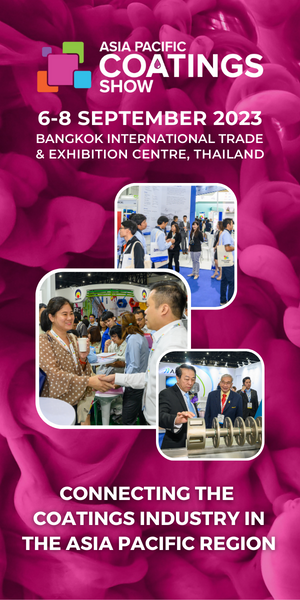
The European paint, printing inks and artists’ colours industry is under increased pressure due to rising raw materials prices. A complex mix of demand, capacity issues and scarce transportation resources of key raw materials is enhancing uncertainty in the supply chain. Despite the enormous impact for the industry, the coatings industry is striving to reduce risks to customers.
"After a year marked by the COVID-19 pandemic, our industry faces serious challenges again in 2021 due to the rise in raw material prices,” said André Vieira de Castro, Chairman of CEPE. There are several reasons for the increase, namely increasing demand for raw materials due to the anticipated economic recovery, a shortage of raw materials available due to bad weather conditions and the closing of several plants causing suppliers of raw materials to invoke force majeure. In addition, transportation costs are on the rise resulting from the sharp increase in oil prices. André Vieira de Castro pursued "The burden for the industry is immense, as raw material prices account for more than half of the cost. Since January last year, costs for key components like epoxy resins have risen by 60% in Europe. The situation is similar for solvents, where the price of acetone and n-butyl acetate alone rose by 123% and 91% respectively.”
The current situation stems from Europe and Asia and especially the unexpected rapid V-shaped recovery in China, which is fuelling demand for essential raw materials. Next to epoxy resins, the list of highly demanded petrochemical raw materials includes inter alia polyester resins, polypropylene glycols, acrylic acids, acrylic resin, UV resins, polyurethane resins, and solvents. In parallel to petrochemical raw materials, global pigment raw material costs (including titanium dioxide, red and yellow iron oxide) have also seen sharp increases. Key drivers for the increases include high demand across all industries, greater domestic supply requirements in producing countries, generic supply and demand imbalances and higher pigment component costs.
The situation is exacerbated by capacity issues. Disruptions at producers in Asia and Europe – either due to factory closures or plant accidents – have significantly tightened supply. Another cost factor is scarce transportation resources. The COVID-19 pandemic led to erratic demands for international trade that affected the shipping container movements. The current global shortage of containers in the right places has led to a sharp increase in transportation costs: prices of containers between China and Europe have risen more than 400% since Q4 2020.
While the coatings industry seeks to cope as much as possible with the current uncertainties, the world market pressure should give European decision-makers pause for thought. "Increased sustainability is undeniably the way forward, but global competition should not be ignored in the measures of the EU Green Deal. It is essential for Europe to have a strong chemicals industry with factories based in Europe in order to be more self-sufficient, otherwise it is the European economy as a whole which is under threat” concluded André Vieira de Castro.




